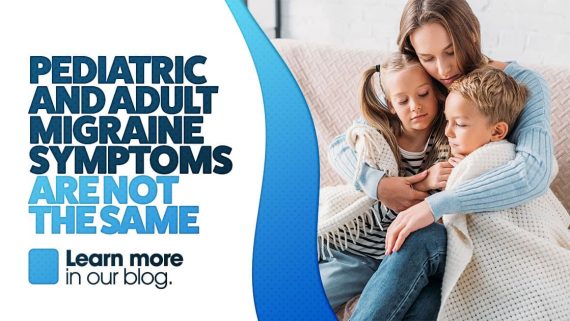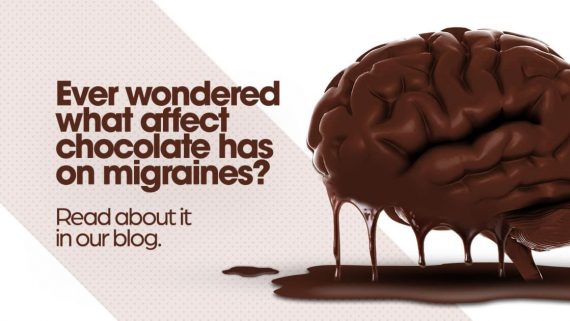The National Headache Foundation estimates that around 5% of children will experience a migraine by the age of 10. However, pediatric migraines often go undiagnosed because children cannot fully communicate their symptoms. Pediatric and adult migraine symptoms do differ, and we’re going to show you how.
Adults Vs. Kids Migraine Symptoms
Light and sound sensitivity are common in adults with migraines. Children can also experience the same but may have trouble describing it. Instead, they may put on sunglasses or earplugs or go to a dark, quiet room. Children with migraines often experience vertigo, abdominal pain, and sensitivity to odors more than adults. They also have more involuntary symptoms such as:
- Forehead and facial sweating or flushing
- Eye redness or tearing
- Runny nose or congestion
- Swelling around the eye
- Drooping eyelid
Phase Symptoms Difference
In general, migraines last a significantly less amount of time in children. Moreover, the location of the headache pain is also different in children. They feel pain on both sides of their heads or across their foreheads. Adults typically experience headache pain on one side of the head. During the different phases of a migraine, the differences between adults and kids include:
- Pre-headache: Both children and adults commonly experience mood changes like irritability. However, a child may also appear paler or develop undereye shadows. In contrast, adults report more stomach issues such as diarrhea or constipation and muscle stiffness, fatigue, and yawning.
- Aura: A child may have difficulty recognizing or reporting visual disturbances such as zig-zag lines, bright spots, or flashing lights.
- Headache: Though a child may not verbalize it, the throbbing pain of a pediatric migraine is moderate to severe. Your child may stop eating or playing, cry a lot, or have temper tantrums.
- Post-headache: The symptoms individuals experience following a migraine is called the postdrome, or post-headache phase. Adults report fatigue, weakness, mood changes, stiff neck, difficulties concentrating, or dizziness. Kids most commonly feel the following:
- Thirst
- Sleepiness
- Vision changes
- Food cravings
- Numbness and tingling sensations
- Eye pain
Recognizing how a pediatric migraine differs from an adult migraine is critical in proper diagnosis and learning how to manage this lifelong condition. ActivMed Practices & Research have several adult and pediatric studies enrolling at our Lawrence, MA location.

To learn more, call us at (978) 655-7155, or visit our website today!
Sources:
https://www.verywellhealth.com/pediatric-migraines-4178789https://americanmigrainefoundation.org/resource-library/pediatric-migraine/
On July 7th, chocolate lovers around the globe will guiltlessly indulge in their favorite treat during World Chocolate Day. Though chocolate connoisseurs may argue the benefits of responsible consumption, its impact on migraines isn’t always clear. Is it a trigger or a warning of an impending attack? In truth, the relationship between chocolate and your migraine is as unique as you are.
To Eat, or Not to Eat
Migraines are often triggered by different environmental, physical, and emotional factors. Changes in routine, dehydration, and stress are the most common. Excessive consumption of caffeinated products can contribute to the onset of a migraine. All chocolate has some caffeine in it. So, if that is a trigger for your migraines, you may want to consider that.

On the other hand, many people reportedly crave sweet food such as chocolate before the pain of a migraine. This leads them to conclude that eating sweets are causing their migraines. However, sometimes those cravings are symptoms of the beginning of an attack. Identifying what’s triggering your migraines and recognizing common symptoms before an attack are both crucial in managing your condition better. Therefore, knowing how chocolate affects your migraines is one way to help!
World Chocolate Day
Since 2009, World Chocolate Day celebrates all kinds of goodies made from chocolate. It is also the anniversary of when chocolate was first brought over from Europe on July 7th, 1550. Since then, the dark treat has led to the creation of chocolate milk, hot chocolate, chocolate candy bars, chocolate cake, brownies, and many other favorites. You can join in the chocolate-themed celebration by enjoying your favorite dessert, reading a related book, or learn more about chocolates around the world. Whatever you do, share it on social media using the hashtag #WorldChocolateDay!

Although the effects of chocolate are unique to each person with migraines, a surer way to help migraine symptoms is through clinical research studies. By participating in migraine research studies, you play a personal role in advancing options for current and future generations. You also learn more about your condition and may gain access to potential new opportunities not yet available to the public.
Migraines are also common in children, which drives the need for designing age-appropriate therapies for safer, more effective outcomes. ActivMed Practices & Research is currently enrolling migraine studies for children aged 6-17 at our Lawrence, MA location. To learn more, call (978) 992-4239 or visit our website.
Sources:
https://nationaldaycalendar.com/world-chocolate-day/
https://www.migrainetrust.org/about-migraine/trigger-factors/common-triggers/


